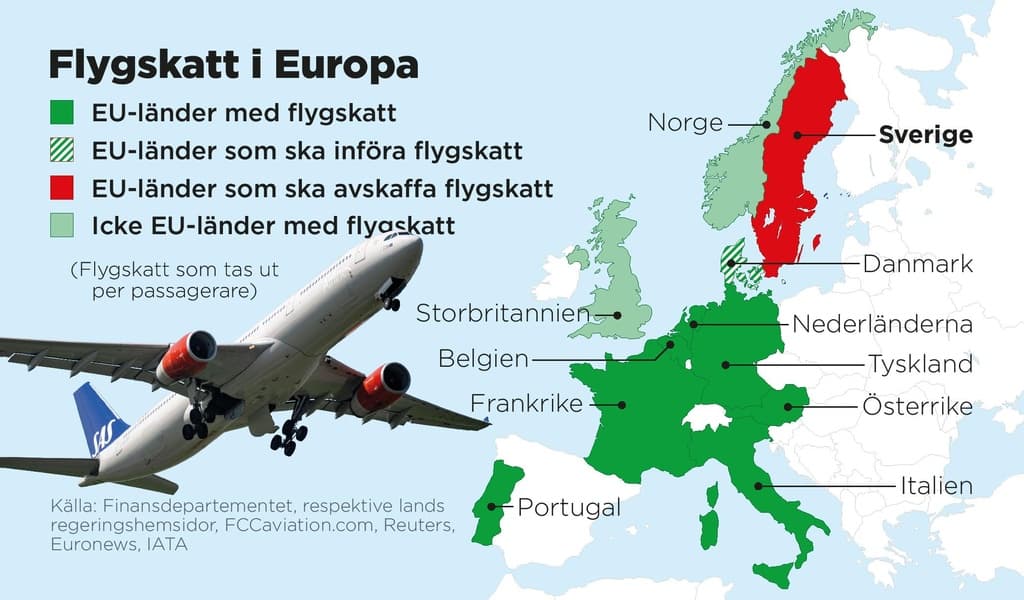What does the Swedish flight tax look like?
The Swedish flight tax varies depending on the destination. For a one-way trip within Europe, it is 76 kronor per passenger, for a medium-distance trip outside Europe, such as to Egypt or Algeria, it is 315 kronor. And for longer trips, such as to Thailand, it is 504 kronor.
When will it be abolished?
The government has announced that the tax will be removed on July 1, 2025.
How will emissions be affected?
The proposal is expected to increase air travel due to cheaper tickets and airlines being able to open more routes.
The proposal is expected to result in increased carbon dioxide emissions from air travel from Swedish airports by approximately 110,000 tons of carbon dioxide equivalents per year.
What does the flight tax look like in the rest of the EU?
Seven EU countries, in addition to Sweden, have flight taxes that are levied per passenger: Austria, Belgium, Germany, France, Italy, the Netherlands, and Portugal. The design and amounts vary.
Austria: 12 euros, except for short flights (less than 350 kilometers) when the tax is 30 euros.
Belgium: 10 euros when the destination is less than 500 kilometers from Brussels, such as to London. 2 euros for trips over 500 kilometers when the destination is within the EEA, the UK, or Switzerland, and 4 euros for other trips.
Germany: Between 15.53 and 70.83 euros depending on the destination.
France: 5.05 euros for a person traveling within the EU/EEA or to a country less than 1,000 kilometers from France. 9.09 euros for other countries.
Italy: 10 euros for shorter flights under 100 kilometers and up to 200 euros for longer flights.
The Netherlands: 29.05 euros regardless of the trip.
Portugal: 2 euros regardless of the trip.
In Denmark, a flight tax will be introduced from the turn of the year. It will be phased in to reach 50 Danish kroner (DKK) for flights within Europe, 310 DKK for medium-distance flights, and 410 DKK for long-distance flights by 2030.
Norway and the UK, which are not part of the EU, also have flight taxes.
What requirements are placed on air travel?
Air travel has been part of the EU's Emissions Trading System (ETS) for several years, but air travel has had a free allocation of emission allowances. This will be phased out in the coming years – with 25 percent in 2024, 50 percent in 2025, and completely by 2026.
The requirement for the use of sustainable aviation fuels, as part of Refuel EU Aviation, will also increase and reach 2 percent in 2025, 6 percent in 2030, 20 percent in 2035, and 70 percent in 2050.
Sources: Ministry of Finance, respective countries' government websites, FCCaviation.com, Reuters, Euronews, IATA.





